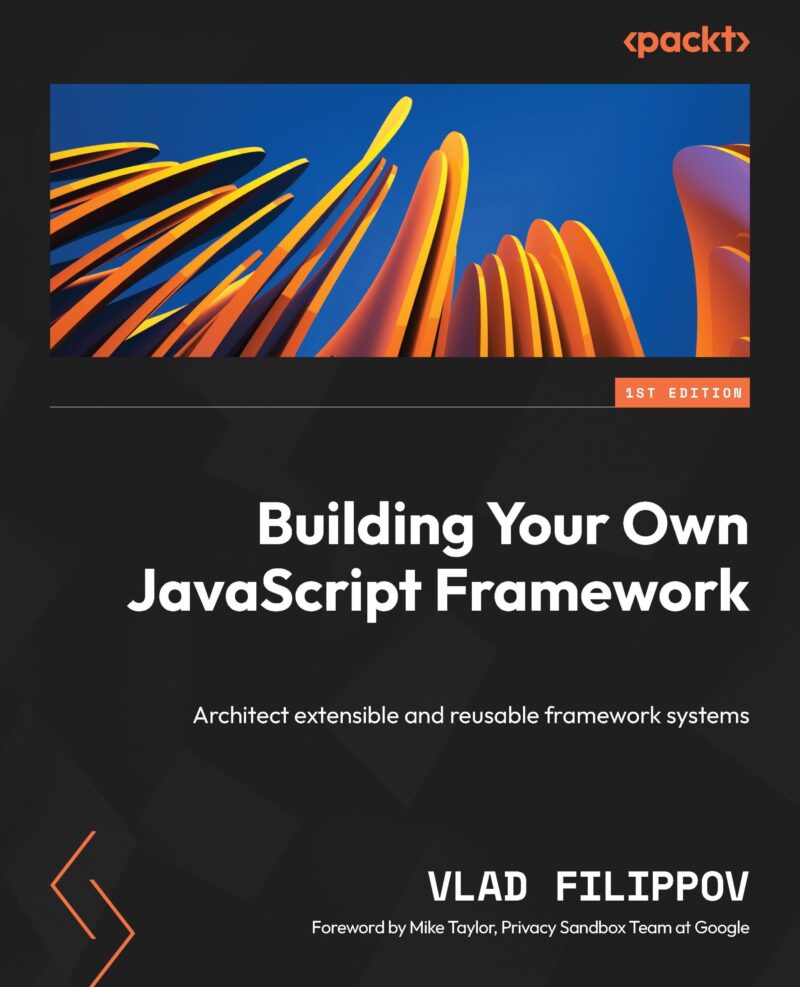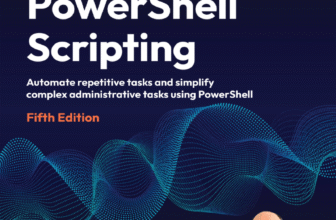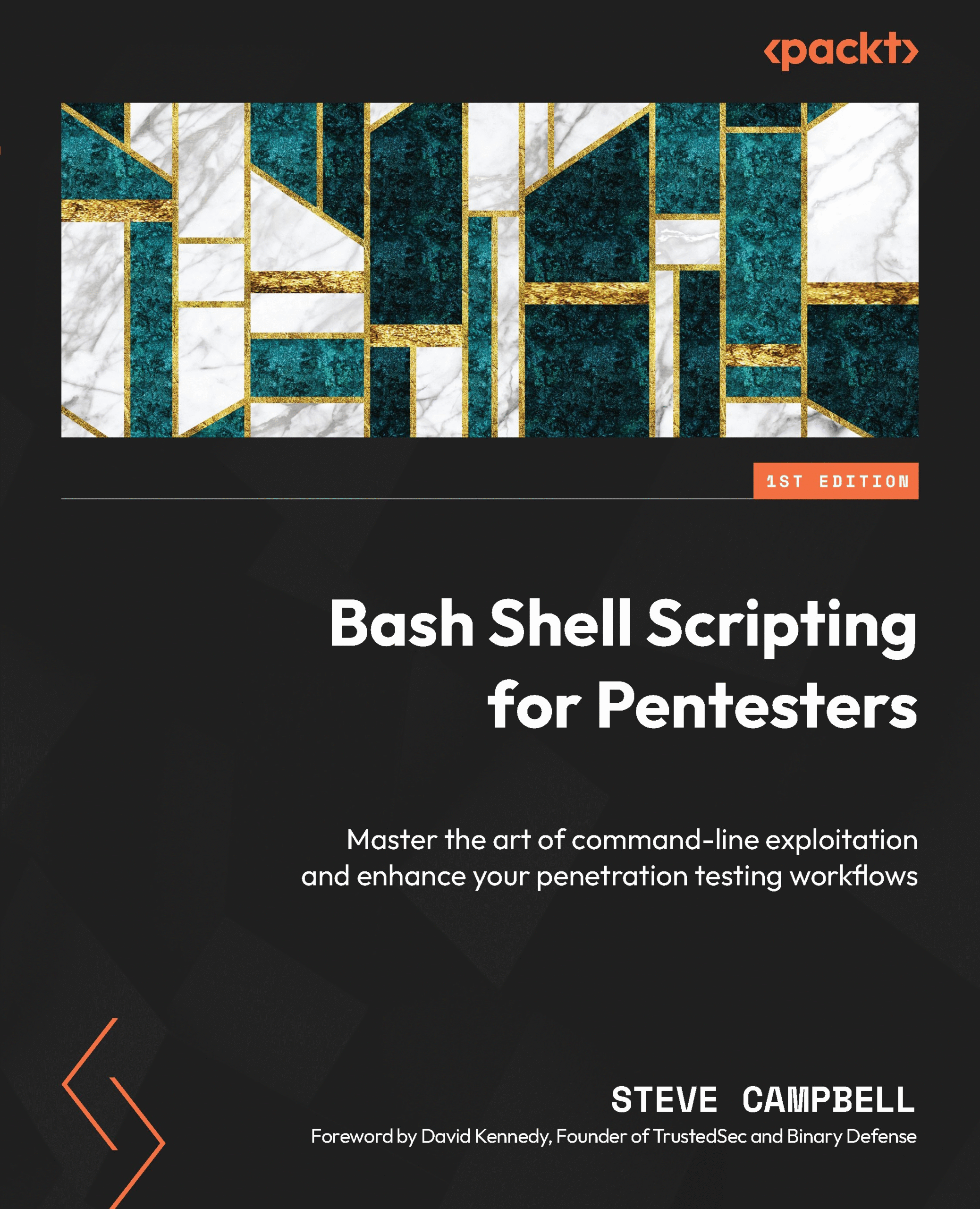Building Your Own JavaScript Framework — Master Extensible and Reusable Framework Development
Introduction
Why build your own JavaScript framework now? The library/framework landscape is evolving fast — new runtimes (Node.js, Deno), new paradigms (reactivity, serverless, web components), and rising expectations around performance, maintainability, and integration. If you’ve ever felt constrained by the limitations of existing frameworks, or overwhelmed by their abstractions, Building Your Own JavaScript Framework by Vlad Filippov offers a timely guide.
This book is for intermediate-to-advanced JavaScript developers, software architects, open source maintainers, and anyone looking to deepen their understanding of framework design. You should be comfortable with JavaScript fundamentals, know at least one modern framework (React, Vue, Angular, Svelte etc.), and have some exposure to backend or full-stack concerns. Beginners may find parts challenging but can still benefit from insights on architecture and maintenance.
Key takeaways you’ll gain:
- Understanding of framework types, history, and trade-offs in current JS ecosystems.
- How to structure abstractions (modules, components, APIs) to allow extensibility and reuse.
- Practical example and patterns for building a framework from scratch: organizing code, data binding, abstraction, and usability.
- Strategies for performance testing, maintenance workflows, release processes, and long-term project evolution.
- Tools and techniques (TypeScript, GraphQL etc.) relevant to modern framework design.
About the Book
In Building Your Own JavaScript Framework: Architect extensible and reusable framework systems, Vlad Filippov walks you through both theory and practice of designing a framework tailored to your project’s needs. Published in November 2023 by Packt Publishing, this 1st edition (both print and eText) spans 236 pages. It’s structured in three major parts:
- The Landscape of JavaScript Frameworks – gives you historical context, comparisons among existing frameworks (frontend, backend, native, testing etc.), and dives into internal architecture and abstraction theory.
- Framework Development – shifts to hands-on, guiding you through project setup, module interfaces, full-stack concerns, frontend-specific frameworks, and implementing features like data binding.
- Maintaining Your Project – covers release cycles, usability, quality, performance testing, long-term maintenance, and best practices to keep your framework alive and relevant.
What makes this book especially relevant today:
- JavaScript runtimes and web platforms are in flux; having a custom framework lets you optimize for your unique constraints.
- Increased demands around modularity, performance, and maintainability.
- More mature toolchains (TypeScript, GraphQL) that enable safer abstractions.
- Strong emphasis on maintenance, which is often neglected in books that focus only on initial framework construction.
Book Details Table
| Field | Detail |
|---|---|
| Title | Building Your Own JavaScript Framework: Architect extensible and reusable framework systems |
| Author(s) | Vlad Filippov |
| Publisher | Packt Publishing |
| Year | 2023 |
| Edition | 1st |
| Pages | 236 |
| ISBN-10 / -13 | ISBN-13: 978-1804617403 (print), 978-1804618721 (eText) |
| Formats | Print (paperback), eBook / Digital, PDF included with print/eBook purchases |
| File Size | Approximately 5 MB (digital version) |
| Language | English |
| Official URL | Packt product page |
About the Author
Vlad Filippov is a full-stack software engineer, open-source advocate, and web developer based in Toronto, Canada. He has worked across frontend, backend, browsers, and cloud services, especially in JavaScript ecosystems. :contentReference[oaicite:22]{index=22}
Vlad formerly spent over six years at Mozilla working on Firefox & related cloud services. He holds a specialist degree in Computer Science from the University of Toronto, and has presented at tech conferences globally. :contentReference[oaicite:23]{index=23}\
Table of Contents
- Part 1: The Landscape of JavaScript Frameworks – This section lays the foundation by explaining what JavaScript frameworks are, why they exist, and how they fit into the modern web ecosystem. It introduces different categories of frameworks, their architectural styles, and the abstractions they provide to developers.
- Chapter 1: The Benefits of Different JavaScript Frameworks – Compares the advantages and limitations of major frameworks such as React, Angular, and Vue, highlighting performance, scalability, and developer adoption.
- Chapter 2: Framework Organization – Explains how frameworks are structured internally, covering concepts like modules, plugins, libraries vs frameworks, and how developers should organize abstractions effectively.
- Chapter 3: Internal Framework Architecture – Breaks down common design patterns, such as MVC and MVVM, while showing how event-driven architecture, rendering pipelines, and state management fit into framework design.
- Chapter 4: Ensuring Framework Usability and Quality – Focuses on developer experience (DX), intuitive API design, documentation practices, testing strategies, and how to keep a framework reliable for long-term use.
- Part 2: Framework Development – This section transitions from theory into practice, guiding readers through the process of designing and coding their own JavaScript framework. It emphasizes practical implementation while considering scalability, extensibility, and real-world application needs.
- Chapter 5: Framework Considerations – Outlines key questions to ask before building a framework, such as defining its purpose, identifying the problem space, and understanding the target developer audience.
- Chapter 6: Building a Framework by Example – Provides a hands-on, step-by-step walkthrough of coding a minimal but functional framework, demonstrating component rendering, DOM manipulation, and data binding.
- Chapter 7: Creating a Full Stack Framework – Expands the scope to include both frontend and backend integration, exploring APIs, server-side rendering, dependency management, and database connectivity.
- Chapter 8: Architecting Frontend Frameworks – Dives deeper into client-side considerations such as reactive state, component lifecycle, template rendering, and virtual DOM optimizations.
- Part 3: Maintaining Your Project – This final section ensures that readers understand how to maintain and evolve their framework after the initial development, covering long-term care, community building, and industry relevance.
- Chapter 9: Framework Maintenance – Discusses release strategies, semantic versioning, bug fixing, managing breaking changes, and how to keep the framework aligned with modern JavaScript standards.
- Chapter 10: Best Practices – Summarizes the key lessons learned, outlines coding conventions, emphasizes security and performance best practices, and explores the future evolution of JavaScript frameworks.
Key Highlights / Summary
- Trade-off awareness in framework design: Filippov shows that choosing or building a framework always involves trade-offs (flexibility vs complexity, abstraction vs transparency). Knowing why an abstraction exists helps you decide what to reuse and what to avoid.
Exercise: pick two JS frameworks you use (e.g. React and Svelte) and map out their architectures. Identify 3 abstractions each (components, state management, rendering) and list trade-offs. Use insights to sketch a minimal framework that combines what you like. - Importance of API design and usability: Frameworks are not just internal code; they present APIs to developers. Naming, boundaries, defaults, and extensibility matter.
Application: Define your own small module/prototype API — e.g. for a plugin system or component registration — and build two versions: one with “verbose safe defaults”, another minimal. Collect feedback from peers or test yourself using them. - Modular architecture and abstraction layering: The book emphasizes splitting responsibilities (e.g. modules, components, core services) and using abstraction to isolate internal changes, reducing coupling.
Exercise: In an existing codebase (or small project), refactor a monolithic file into separate modules following dependency inversion: separate data access, rendering, and event handling. - Performance, testing and maintenance workflow: Theory is insufficient without measurement. Filippov walks you through how to set up performance tests, detect bottlenecks, define release cadence, and maintain frameworks over time.
Lab: create benchmarks for a small component you wrote, compare a naive implementation vs one optimized (say using memoization or reactive change detection). Also write a plan for versioning and releases over the next 6 months for a framework you’d maintain. - Future-looking patterns and adaptability: The book doesn’t ignore where JS and the web are going: it covers runtime environments, emerging API standards, how tools like TypeScript or GraphQL integrate.
Real-world use: pick a new technology (say WebAssembly, or JS serverless functions), and design how your framework could adapt: what modules would need swapping, how abstractions should layer.
Expert Review
Strengths
- Comprehensive coverage: from theory to code to maintenance.
- Clear, practical examples and guided building of a framework.
- Addresses often neglected topics: long-term maintenance, API usability, release workflows.
- Written by someone with deep real-world experience; author credible.
- Up-to-date with current tools (TypeScript, GraphQL, modern runtimes).
- Modular organization of content, helpful for readers to pick parts to focus.
Weaknesses / Limitations
- Assumes a fair amount of prior experience with JS and frameworks; beginners may struggle.
- Less focus on certain niche domains (e.g. game engines, WebAssembly heavy systems) — some parts more web-centric.
- Example frameworks built are illustrative but may not cover all real-world scale constraints (e.g. extremely large team, legacy constraints).
- Less focus on CSS, styling, UI-UX concerns or complex UI state management, more on structure & APIs.
- Some tools / external libraries evolve fast; parts may age quickly.
Star Ratings
| Category | Rating (1-5) | Justification |
|---|---|---|
| Content Depth | 5 | Deep coverage of architecture, abstraction, trade-offs, maintenance. |
| Practicality | 4 | Very useful exercises and code; some areas more conceptual. |
| Readability | 4 | Clear writing, good structure; some dense parts for newcomers. |
| Value-for-money | 5 | Given how rare good books on framework design + maintenance are, this offers strong value. |
Who will struggle with this book and why
- Absolute beginners who have only done basic JS may lack the foundation for many abstraction / architecture discussions.
- Design-only or UI-only engineers not involved in backend or systems will find parts (full-stack, runtime, toolchain) less immediately applicable.
- Teams with heavy legacy constraints (old browsers, outdated JS) may find transitioning to the patterns in this book costly, and may need additional sources specific to legacy constraints.
- Readers expecting tutorial-style frameworks (e.g. building a copy of React or Vue) might be disappointed — the book aims for architectural teaching more than building a production clone.
Who Should Read This Book?
| Persona | Why It Benefits Them | Recommended Sections / Focus |
|---|---|---|
| Mid-level Frontend Developer | To deepen understanding of framework internals & API design. | Part 1 (Chapters 1-4), Chapter 8 (Frontend) |
| Full-stack Engineer | To build or maintain frameworks used across frontend & backend; manage dependencies. | Part 2 (Chapters 5-7) plus Part 3 |
| Open Source Maintainer | To design reusable, extensible framework code, maintain release cycles. | Chapters 6, 9, 10 |
| Software Architect / Engineering Lead | To decide architecture trade-offs, scaffold team workflows, set standards. | Part 1, Part 3, Best Practices |
| DevOps / Performance Engineer | For performance testing, bottleneck tracking, release & maintenance rules. | Chapters 4, 9 |
| Educator / Trainer | Use the book’s examples and structure to teach students framework design. | Chapters 1-4, Chapter 6 |
| Junior Dev looking to level up | Focus more on conceptual chapters, absorb API design & abstraction theory. | Chapters 1-3 |
| Backend Engineer exploring frontend frameworks | To understand what frontend frameworks do under the hood so you can collaborate or build tools. | Chapter 8, Part 2, API design parts |
Related Resources / Books
- The Ultimate Kali Linux Book (2nd Ed.): Perform advanced penetration testing with Nmap, Metasploit, Aircrack-ng & Empire. [Visit Article]
- Practical Threat Detection Engineering [Visit Article]
Frequently Asked Questions
Q: Is Building Your Own JavaScript Framework suitable for beginners?
A: It is best for developers who already have experience with JavaScript and familiarity with at least one framework. Beginners may find conceptual chapters challenging but can still benefit from the examples.
Q: Does this book help if I want to build a production-ready framework?
A: Yes – it covers many of the building blocks (abstractions, architecture, API design, performance, maintenance). However, for large scale production systems you’d likely need supplemental resources (on security, scaling, UI/UX, etc.).
Q: What prerequisites do I need?
A: Good understanding of modern JavaScript (ES6+), familiarity with modules, knowledge of at least one frontend and one backend framework, understanding of version control. TypeScript knowledge helps.
Q: Are code examples / lab assets provided?
A: Yes — the book provides example code files. You’ll find sample projects to implement parts of the framework yourself. (See code availability section below.)
Q: How up-to-date is the content, especially with emerging runtimes (Deno, WASM, etc.)?
A: Published in late 2023, it includes discussion of modern runtime trends and ecosystem tools. Some future areas will evolve, but the architecture principles remain relevant.
Q: Will this book help with performance optimization?
A: Definitely — there are chapters dedicated to performance tests, benchmarking, bottleneck detection, plus best practices in maintaining performance over time.
Q: Is there support for download / preview?
A: There is a free PDF version included when you buy the print or Kindle/eBook version via the publisher.
Q: What are the limitations of the book?
A: As noted, some areas (very large teams, highly specialized use-cases) may require additional external reading. Also real-world integrations (legacy systems, cross-platform constraints) might demand extensions.
Download
Download — Building Your Own JavaScript Framework (PDF)
Format: PDF (eBook)
File size: varies by edition
Short disclaimer:
This download is presented for educational purposes only. Always support the author and publisher by purchasing the official edition if you find the material useful. Unauthorized distribution or piracy harms authors and the community.
Download the Code / Lab Assets
The book provides code examples and lab assets to accompany its hands-on parts. They can be found via the publisher’s site or the GitHub repo. [Visit Github Repo]
Actionable Study Plan / Curriculum (8-Week Plan)
| Week | Learning Goals | Tasks / Labs | Checkpoint / Deliverable |
|---|---|---|---|
| Week 1 | Understand JS framework landscape & trade-offs | Read Part 1, Chapters 1 & 2. Research 2-3 frameworks and map their architecture. | Write a comparison report: features, architecture, pros/cons (2-3 pages). |
| Week 2 | Deep dive into internal architecture & abstractions | Read Chapter 3. Build a small module: event emitter + component system. | Deliver a prototype module with tests. |
| Week 3 | Usability, quality, API design | Read Chapter 4. Design API surface for a toy framework (components, lifecycle). Peer review with another dev. | API spec document + sample usage code. |
| Week 4 | Framework planning & example | Read Chapters 5 & 6. Plan goals & stakeholder needs for a framework you want to build. Start implementing core skeleton. | Core skeleton code (module structure, build tooling) with readme. |
| Week 5 | Full-stack concerns & frontend architecture | Read Chapters 7 & 8. Add backend-side concerns (data layer, APIs) and frontend UI modules. | Build a simple full-stack mini framework sample. |
| Week 6 | Performance & developer workflow | Focus on performance testing and optimizing your prototype. Add linting, debugging, DX enhancements. | Benchmark report + optimizations. |
| Week 7 | Maintenance and release strategy | Read Chapters 9 & 10. Create versioning, release, and maintenance plan for your prototype. | Release plan & documentation; maybe publish a beta to open source. |
| Week 8 | Synthesis & future readiness | Reflect on what you built. Adapt framework for future trends (e.g. SSR, WebAssembly, new JS features). Finalize deliverables. | A complete small framework you built, plus a write-up: what you’d improve, what you learned. |
Conclusion
Building Your Own JavaScript Framework fills an important gap: not many books give both the architecture theory and the practical, hands-on blueprint of building and maintaining your own framework. For developers wanting to go beyond using existing frameworks, who want to understand abstractions, make better architectural choices, and design for long-term maintainability, this book is highly valuable.
If you are working on full-stack apps, designing internal tools, or building open source libraries, this book gives you tools to be more intentional, more adaptable, and better able to sustain your work. Even if you never publish your own framework, applying the patterns here to your codebase can greatly improve clarity, modularity, and developer experience.
Next Steps: Get the book, follow the 8-week plan above, and build your own minimal framework prototype. Share your progress (blog, GitHub) to reinforce learning. Feel free to reach out with questions, critiques, or your own insights.
Was this article helpful?
Loved it? Share your thoughts with a quick comment, submit recommendations and suggestions or leave a star rating in comments!
Free Download








